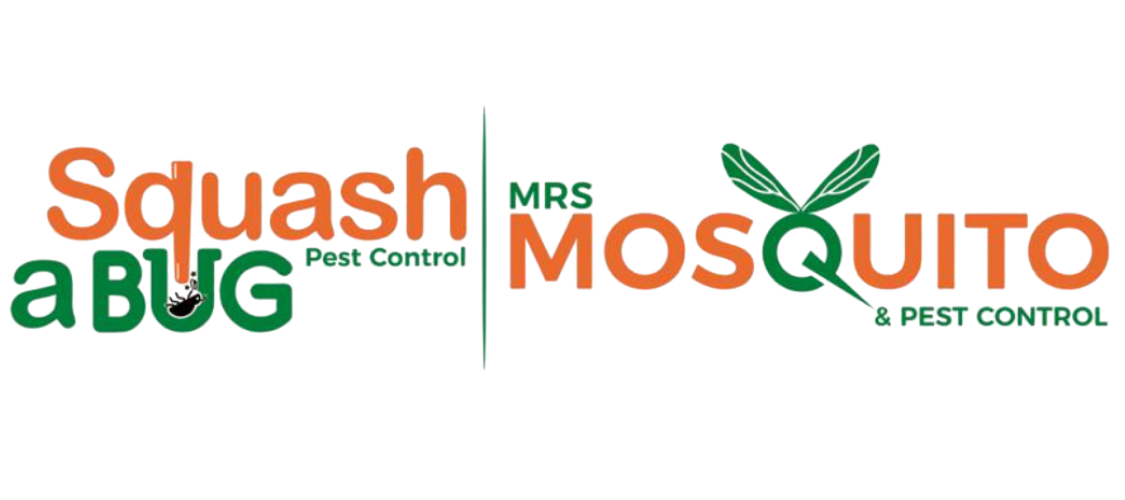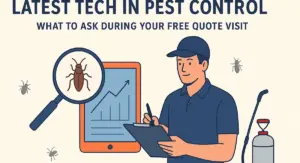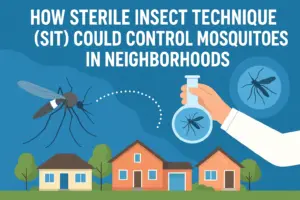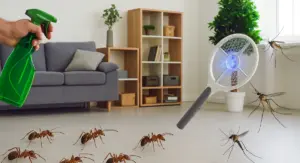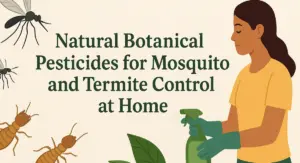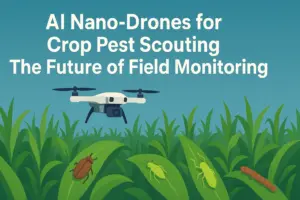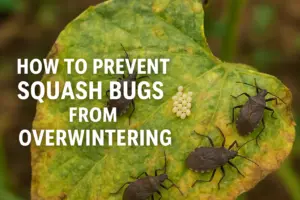Running a restaurant is about more than just serving great food. Behind the scenes, there’s a lot more going on to keep everything running smoothly. One of the biggest hidden threats is something many owners underestimate: pests.
Rodents, flies, roaches, and other insects can show up quietly and quickly turn into a real problem. They don’t just threaten your food. They put your reputation, health inspections, and customer trust at risk.
If you own or manage a food service business, here’s what you really need to know to keep pests out and your restaurant running clean and safe.
Why Pests Target Restaurants
Pests aren’t picky about where they go. They’re simply looking for food, water, and a warm place to hide. Unfortunately, restaurants offer all three, especially if cleaning routines are inconsistent or maintenance gets delayed.
Here are some of the most common reasons pests are attracted to restaurants:
- Open food containers in dry storage
- Grease or food crumbs behind equipment
- Moisture from leaky pipes or standing water
- Overflowing trash cans or dirty dumpsters
- Gaps or cracks in walls, floors, or windows
Even if your dining area looks spotless, pests could be hiding in places guests never see. The key is knowing how to spot the signs early and taking steps to prevent problems before they begin.
Walk Through Your Restaurant Like a Pest Would
Take time to inspect your restaurant from top to bottom. Step into each area and look around as if you were a rat or a cockroach. Ask yourself where you would hide, where you would find food, and how you might get in.
Areas to focus on during your walkthrough:
- Under sinks, around dishwashers, and near drains
- Behind ovens, fryers, and refrigerators
- Around garbage bins and grease traps
- In ceilings, floorboards, and utility rooms
- Outside near dumpsters or loading docks
Document any cracks, gaps, food spills, or standing water. These are areas pests love. Once you identify the weak spots, you can begin fixing them one by one.
Keep Cleaning Routines Consistent
Cleaning once or twice a day is not enough. Pests will always find what’s left behind. Building a strong cleaning routine is one of the best ways to prevent infestations.
Daily cleaning tasks:
- Wipe down prep areas throughout the day
- Sweep and mop all floors at the end of each shift
- Empty trash bins and clean them inside and out
- Sanitize high-touch surfaces, sink areas, and drains
Weekly tasks:
- Pull out kitchen appliances to clean behind and underneath
- Wipe down storage shelves and rotate stock
- Deep clean under counters and hard-to-reach corners
Monthly tasks:
- Clean ceiling vents, light fixtures, and storage ceilings
- Inspect dry goods for signs of damage or droppings
- Revisit entry points for cracks or gaps
Make sure your entire staff understands how important cleaning is for pest control. A few missed crumbs or a leaky mop bucket can quickly lead to problems.
Close the Gaps That Let Pests In
Pests don’t need much space to get inside. Mice can squeeze through holes as small as a dime. Roaches can flatten their bodies to fit through even smaller cracks.
Check for and seal openings around:
- Doors and windows
- Pipes and utility connections
- Floorboards and wall corners
- Roof access points
- Vents and HVAC systems
Install door sweeps and weather stripping where needed. Use silicone caulk or metal mesh to block small holes. Make these inspections part of your monthly maintenance routine to avoid surprises later on.
Don’t Forget the Outside Areas
Your outdoor space plays a major role in pest prevention. If the outside of your building is messy or full of clutter, it creates a perfect habitat for pests. Once they’re comfortable outside, it’s only a matter of time before they find a way in.
Focus on these areas:
- Keep dumpsters clean, covered, and positioned away from entry doors
- Trim bushes, grass, and shrubs to reduce hiding places
- Power wash patios and sidewalks to remove food debris
- Fix any outdoor drainage issues to prevent pooling water
- Regularly clean up cigarette butts, spilled drinks, or litte
The cleaner your exterior, the fewer problems you’ll have inside.
Train Your Staff to Spot the Early Signs
You can’t be everywhere at once. That’s why your team plays a big role in keeping pests out. They should be trained to recognize the early warning signs and know exactly what to do when they see something suspicious.
Encourage your team to look for:
- Droppings, chew marks, or insect wings
- Unusual smells or grease trails along walls
- Sudden changes in food packaging or missing product
- Flying insects near drains or trash
- Strange sounds behind walls or in ceilings
Give your staff a simple way to report problems, and thank them when they do. Their attention to detail could stop a major infestation before it starts.
Partner With a Reliable Pest Control Service
No matter how well you clean or seal your restaurant, it’s smart to have a pest control partner who knows what to look for. Professionals can identify problem areas you might miss and offer long-term strategies that actually work.
Regular visits from a licensed pest control company keep your restaurant in compliance with local health codes and help you avoid fines or shutdowns.
If you’re in need of a trusted expert, check out Squash A Bug’s commercial pest control services. They work with restaurants across the region and understand the unique challenges of food service spaces.
You can also explore their drain fly control solutions, especially helpful if your kitchen has standing water or musty odors. For rodent problems, their rodent control programs can keep your building sealed and protected year-round.
Keep a Pest Prevention Log
Documentation matters more than you might think. When a health inspector visits, being able to show your pest control efforts builds trust. It also helps you stay organized and see what’s working.
Your pest log should include:
- Dates of pest control service visits and results
- Cleaning schedules and assigned staff
- Reports of pest activity and how it was handled
- Repairs or updates made to building infrastructure
- Photos or checklists from walkthroughs
Having this log on hand can also help with insurance claims, landlord communication, or resolving complaints.
Act Fast if You Spot a Problem
If you or your staff notice signs of pests, act immediately. Waiting too long allows the issue to spread and makes it harder to fix.
Here’s what to do right away:
- Isolate the area where pests were seen
- Notify your pest control provider for an urgent visit
- Clean and sanitize the affected space
- Review how the pests got in and make repairs
- Update your prevention strategy if needed
Quick action limits damage and helps keep your restaurant running smoothly.
If a Customer Sees a Pest
It’s one of the worst-case scenarios for a restaurant. If a customer sees a pest and complains, don’t panic. Handle the situation with calm professionalism.
Steps to follow:
- Apologize and take their concern seriously
- Offer a refund or other goodwill gesture
- Let them know you are investigating the issue
- Bring in your pest control team for inspection
- Follow up with the customer if possible
Transparency and action can help maintain trust, even in an uncomfortable situation.
Build Pest Prevention Into Your Routine
Pest control should never be a one-time fix. Make it a regular part of how your business operates. Include it in your team meetings. Review logs monthly. Stay in touch with your pest control service.
Consistency prevents surprises. And if you’re not sure where to begin, take a look at Squash A Bug inspection services to get expert guidance on setting up a plan that works.
Final Thought
Pest prevention isn’t just about checking boxes. It’s about protecting your business, your reputation, and your customers’ health. By staying clean, sealing entry points, training your team, and working with a trusted pest control partner, you’re building a restaurant that stands out for all the right reasons.
Keep your kitchen safe, your dining room inviting, and your customers coming back with confidence. The effort you put into pest control today will pay off in peace of mind tomorrow.
